TLDR Minoxidil effectively lowers severe high blood pressure but may cause side effects like increased hair growth.
In a study conducted across eleven European centers, 100 patients with severe essential hypertension were treated with minoxidil for an average of 8.4 months. The group consisted of 72 males and 28 females with a mean age of 55 years. Initial blood pressures averaged 212/125 mmHg. Within 4 weeks, 94% of patients experienced a reduction in diastolic pressure to below 100 mmHg, and after 8.4 months, the average blood pressure was reduced to 151/91 mmHg. The use of β-receptor-blocking agents and diuretics helped manage heart rate and weight gain. Side effects included increased hair growth, nausea, fatigue, rash, and skin darkening, while ECG and echocardiographic examinations showed improved cardiac function.
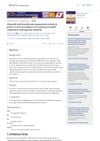 August 2023 in “Journal of Cosmetic Dermatology”
August 2023 in “Journal of Cosmetic Dermatology” Some plants like spinach, broccoli, and matcha may boost the effectiveness of the hair growth drug minoxidil.
 8 citations
,
April 2019 in “Dermatologic Therapy”
8 citations
,
April 2019 in “Dermatologic Therapy” Tretinoin boosts minoxidil's effect on hair loss by increasing enzyme activity.
5 citations
,
January 2018 in “Italian journal of dermatology and venereology” Minoxidil effectively stimulates hair growth in androgenetic alopecia.
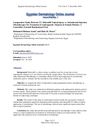 1 citations
,
January 2010
1 citations
,
January 2010 Mesotherapy is more effective than topical spray for female hair loss treatment.
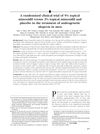 269 citations
,
August 2002 in “Journal of The American Academy of Dermatology”
269 citations
,
August 2002 in “Journal of The American Academy of Dermatology” 5% minoxidil works better for hair growth and density, with minor irritation.
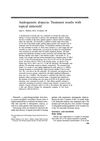 39 citations
,
March 1987 in “Journal of The American Academy of Dermatology”
39 citations
,
March 1987 in “Journal of The American Academy of Dermatology” Topical minoxidil is a safe and effective treatment for hair loss caused by androgenetic alopecia.
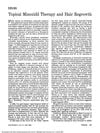 20 citations
,
February 1985 in “Archives of Dermatology”
20 citations
,
February 1985 in “Archives of Dermatology” Minoxidil helps hair regrowth, especially with more indeterminate hairs.
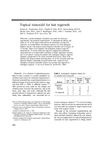 80 citations
,
September 1984 in “Journal of The American Academy of Dermatology”
80 citations
,
September 1984 in “Journal of The American Academy of Dermatology” 5% minoxidil helps hair regrowth in androgenic alopecia.






